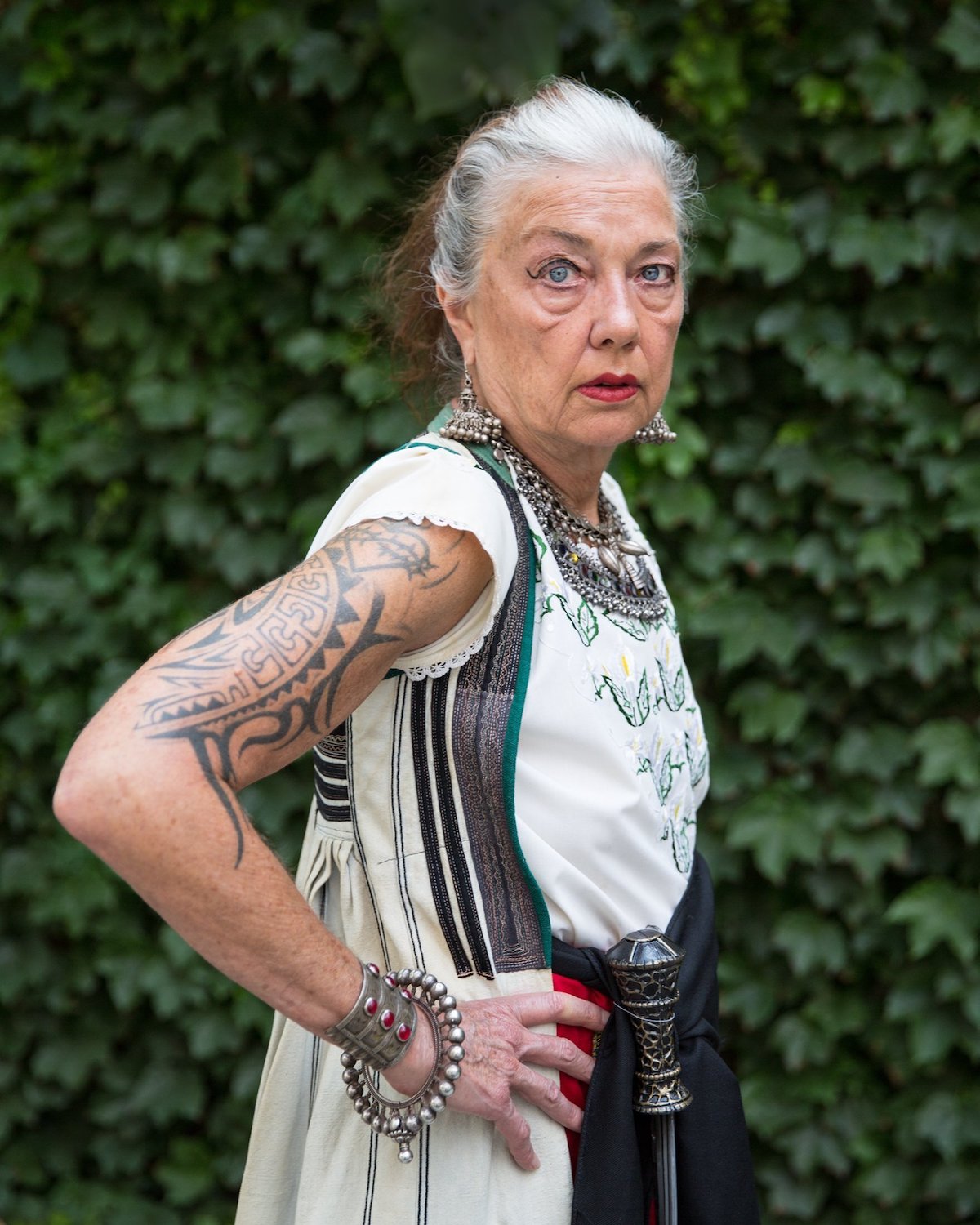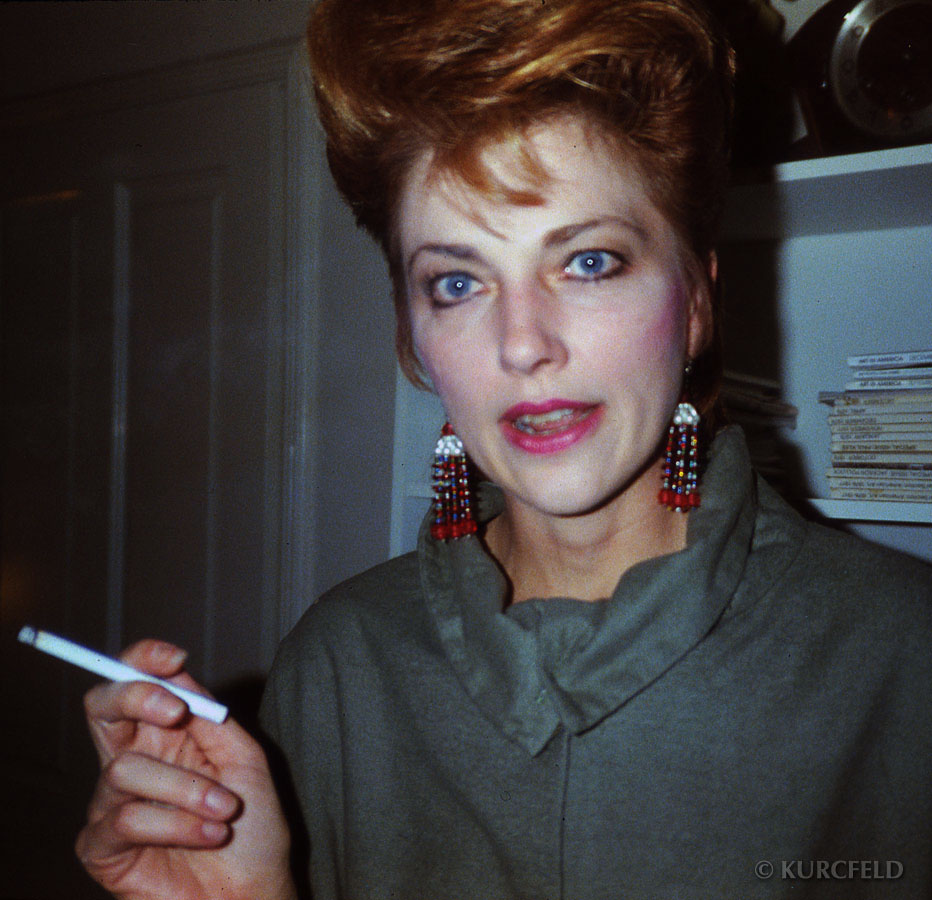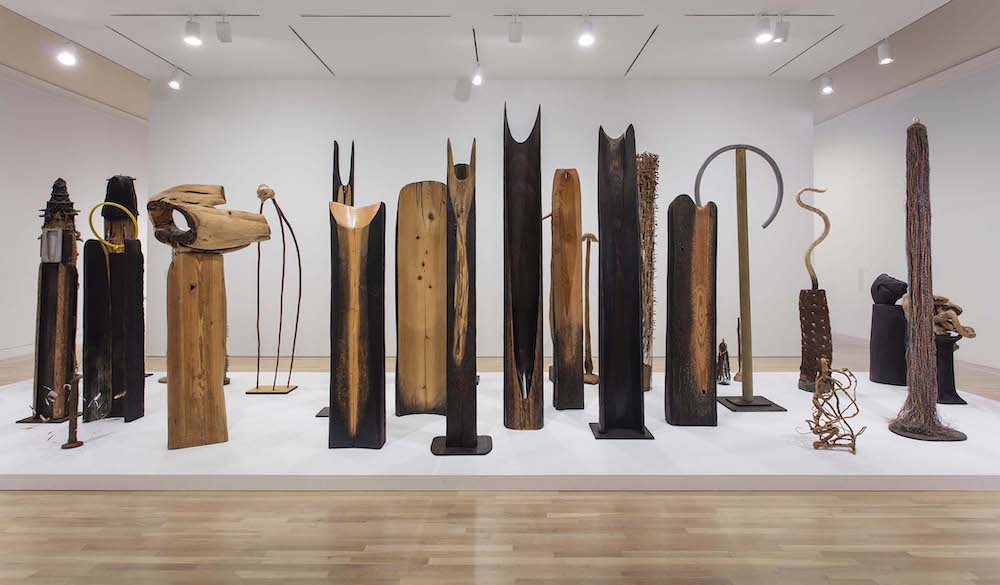Your cart is currently empty!
Tag: obituary
-

APPRECIATION: Carole Caroompas (1946–2022)
The Cantankerous and the LovableCarole Caroompas, an artist and widely admired teacher whose work encompassed painting, drawing, collage, prints and performance, died on July 30, 2022.
In 2007, Western Project, which represented Carole for many years, published a catalog in which various artists, including Alexis Smith, Mike Kelley, Roy Dowell, Paul McCarthy and Karen Carson, paid tribute to Carole’s work and her influence on other artists.
Here is what I wrote for that catalog:
Carole’s paintings are a synthesis of contradictory elements, a fusion of high intellect and low culture. A dialogue is forged between the ephemeral – film stills from the 1950s and 1960s, rock musicians of the 1970s and 1980s, psychedelic posters, kitchen kitsch – and the eternally recurring: longing, dissolution, security, ecstasy, death. Each side contributes to this conversation raucously but without drowning out the other voice; and at unexpected moments, the conversation can take a turn for the tender.
If these paintings had an aroma, it would be the combined scents of ancient libraries and rock clubs at 1 am. They are not ingratiating, though they are beautiful – they are made in a painterly syntax that is by turns rough, nuanced, complexly layered, blunt, carefully adjusted. These paintings do not suffer fools easily. The symbolic language is idiosyncratic, demanding slow reading, and frantic zigzagging patterns disrupt the eye’s easy movement across the surface. The brushwork is variously knotted, rubbed and scraped. These are not works that pluck at your sleeve and plead with you to like them. But after spending some time looking at them, you won’t be able to get them out of your mind. They are like nothing else.
Carole’s work was honored with many awards, including the Guggenheim, a Gottlieb award, two NEA awards, a California Community Foundation Fellowship and a COLA grant. She had a long exhibition history, beginning in 1972, and her work was included in many public and private collections. Her art was examined in two mid-career surveys: 1983 at Cal State Northridge, and 1998 at Otis, where she was a beloved teacher for many years.

Carole Caroompas in 1983, Photo by Michael Kurcfeld But this dry recitation of facts does not catch what was so marvelous about Carole. She was a complex amalgamation of the cantankerous and the lovable. As Cliff Benjamin, her long-time dealer and close friend said, “She dared to live as she desired.” Her appearance was striking: Ava Gardner wearing a Cramps t-shirt, in a cloud of cigarette smoke. She was deeply loyal, fierce in her opinions, generous in her studio visits, convinced that every man was in love with her (and much of the time she was right). She had a wonderful sense of humor and took teasing well, dishing it right back out. No one could match her personal style, either artistically or in terms of self-presentation. She was sui generis and leaves a great vacancy in the artistic community.
-

Tribute to L.A. Sculptor Kenzi Shiokava (1938-2021)
L.A. sculptor Kenzi Shiokava died June 18 at age 82. His passing was announced by the Japanese American National Museum. JANM featured Shiokava’s totemic wood sculptures in the 2017 Pacific Standard Time exhibition “Transpacific Borderlands: The Art of Japanese Diaspora in Lima, Los Angeles, Mexico City, and São Paulo.” The artist was an ideal fit for the show. Born to Japanese immigrant parents in Santa Cruz do Rio Pardo in the state of São Paulo, Brazil, at age 25 he followed his sister to Los Angeles in 1964.
The young Shiokava enrolled in the Chouinard Institute (now CalArts) focused on painting. Fulfilling a sculpture requirement his senior year of 1972, he struck upon his life’s work: Carved found wood, arranged vertically in clusters. He went on to earn his MFA from Otis Art Institute (now Otis College of Art and Design) in 1974. From small found wood pieces such as railroad ties, he moved up to sections of tree trunks and telephone poles, often several feet above head height. He tapered them and hollowed them out using only hand tools. He appears to have arrived at many a form by carving away sections of burnt wood to reveal the contrasting unburnt wood beneath. The totems seem both ancient and modern. Mixed in with these form-centric works are assemblages–wood pillars with cascades of macramé, electronic wires and found materials both organic and non. The artist was influenced by L.A.’s Black assemblage artists, his contemporaries, including John Outterbridge, Noah Purifoy and Betye Saar.

Kenzi Shiokava. Installation view, Made in L.A. 2016: a, the, though, only, June 12 – August 28, 2016, Hammer Museum, Los Angeles. Photo: Brian Forrest. Shiokava made a living as a gardener, notably for Marlon Brando, while maintaining a studio practice in Compton,. (Brando acquired one of his sculptures, as did Jack Nicholson.) He showed at such local institutions as the Watts Towers Arts Center and even MOCA but was not widely recognized until he was 78 years old. It was then that the Hammer Museum presented a large installation of his work in the 2016 Made in L.A. biennial. Nothing else in the museum-wide exhibition came close to his singular, fully-realized vision, honed over decades. Opening night found the artist overcome with joy. As new admirers approached to congratulate him–many stooping to meet his eyes, as he stood under five feet tall–he threw his arms around them, the lei at his neck swinging. Visitors voted him best in show via voting stations around the museum, earning him the Mohn Public Recognition Award of $25,000. L.A. Times art reviewer Carolina A. Miranda declared Kenzi Shiokava the biennial’s “breakout star.” In a KPCC Off-Ramp interview during the exhibition’s run, he said, “Now I know my work is going to survive me.”


